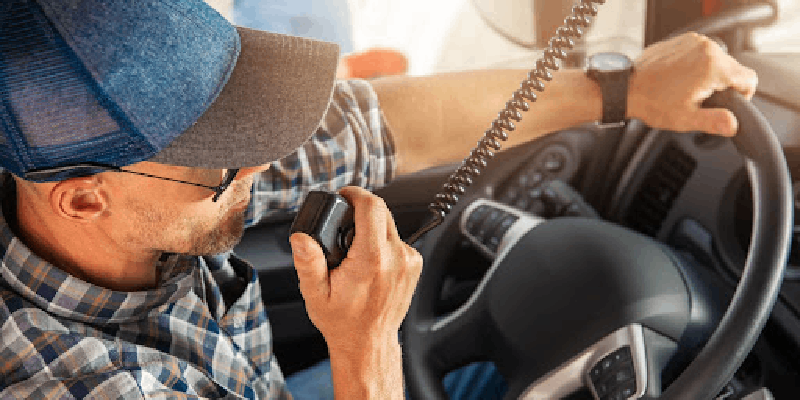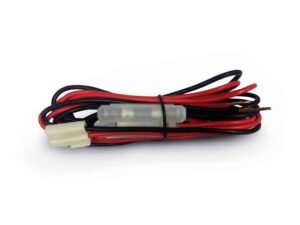Mobile Citizens Band (CB) radios are crucial equipment in the trucking industry, affecting driver safety and allowing for necessary communication even when cell reception is unavailable. Ideal for on-the-road use, mobile CB radios perform at a much higher level than handheld (or walkie-talkie) radios and are easier to use than ham radios. We’ve compiled a list of the most important qualities to consider when selecting a CB radio for your truck, so you can choose a radio equipped with the features that matter the most to you.
Radio Performance Features
First and foremost, the CB radio you choose for your truck should be optimized for maximum performance. Truckers rely on their radios to perform well across long distances and in all types of weather conditions, meaning you will want the best possible signal strength, range, and sound quality out of your radio equipment.
Power
The Federal Communications Commission (FCC) limits the power output of CB radios to 4 watts. Handheld CB radios only operate at about 2 watts of power, but professional drivers will want the full power output for mobile CB radios in their trucks in order to achieve maximum range. The exception to the 4-watt rule is CB radios that operate in single sideband mode (SSB) using up to 12 watts.
Single Sideband Modulation (SSB)
SSB modulation operates on the same channels as a normal 40-channel CB radio. But unlike AM signals, this mode only uses the upper or lower frequency sidebands instead of both simultaneously. This means that power is used more efficiently and is more highly concentrated, resulting in longer-distance communications and a power limit of 12 watts – 3 times the amount of a CB radio without SSB capabilities.
The Uniden Bearcat 980 SSB and Galaxy DX 959 are popular models with extensive features including single sideband capability. Keep in mind that Single Sideband Mode can only transmit and receive signals from other SSB CB radios.
Antenna
Although the antenna is not a permanent part of the radio, this is essential for getting the maximum range and best performance out of your mobile radio. Even the best radios will not function properly without a high-quality antenna. Stryker’s SR-A10 CB antenna was designed with truckers in mind – this high-power antenna helps to achieve a strong signal even under poor weather conditions, and the optional magnet base is heavy-duty to withstand fast driving speeds and cab vibrations.
SWR Meter
SWR meters measure your radio transmission’s standing wave ratio (SWR) to ensure your antenna is working properly. This can be a convenient, built-in feature of your radio or an add-on. The SWR meter measures if there are discrepancies between the transmitted and reflected signals, helping to prevent damage and improve your signal when installing and tuning your radio antenna.
Microphone
A quality CB microphone is an added – not inherent – feature of CB radios. However, it has a significant effect on your radio’s performance. A noise-canceling mic like the SR-65BC from Stryker is ideal for loud environments, including a truck cab. Modeled after military and EMS microphones, this model is also helpful for truckers because it is both lightweight and durable.
Noise Control
Noise interference can easily ruin your experience with your CB radio. Truckers use a combination of features to help limit background noise and improve sound quality, including squelch control, RF gain, NB/ANL, or a Hi-Cut filter.
Squelch Control
Radio operators can turn up squelch control to quiet background static, only letting through strong, direct signals. Be careful not to turn squelch too high, or it may block wanted signals that happen to be weak or far away.
RF Gain
RF gain is similar to squelch control but acts as a sensitivity filter. RF gain controls your radio’s ability to receive distant or close-by signals, which in turn affects the level of noise your radio picks up.
NB/ANL
The Noise Blanker (NB) and Automatic Noise Limiter (ANL) are features included in most mobile CB radios and are necessities for operating a radio in a truck. NB/ANL are noise filters, reducing interference from outside sources such as power lines or engine noise.
Hi-Cut Filter
The hi-cut filter is another way of reducing static by removing high frequencies that make up a significant portion of white noise. Cutting higher frequencies also improves the clarity and sound quality when receiving communications.
Safety and Accessibility Features
Radios themselves are a key part of trucker safety, keeping lines of communication open even when cell reception is down. Certain safety features are necessary to improve the radio’s usability, allowing drivers to stay focused on the road.
Bluetooth Capabilities
Radios with Bluetooth capabilities allow for hands-free cell phone conversations through your CB radio. This feature reduces the risk of distracted driving, while still letting you communicate with family and friends or make work-related phone calls.
Backlighting
Color LCD display is a key feature that comes into play when driving at night, during bad weather, or in any kind of dark driving conditions. Backlighting makes the radio screen easier to read, and some radios come with backlit knobs so drivers can easily identify where to make adjustments to their radio. Even if your radio doesn’t have illuminated controls, you can install a lighted knob kit to make it easy to operate your radio in the dark.
Weather Alerts
The NOAA weather alert feature lets truckers receive emergency weather warnings through their CB radio without having to tune into a weather channel. The National Weather Service will send out alarm tones that interrupt your channel and even come through when your radio is off (provided it is still connected to power).
Channel Scanning and Presets
While manually flipping through channels isn’t a problem for other radio operators, truckers will want a channel scan that automates this process. Channel scan lets truck drivers focus on the road while it scrolls channels to find one with an active conversation. This is particularly helpful because certain CB channels have designated uses that are predominantly for the benefit of truckers.
Channel 9: Emergency channel for communication about first response and accidents
Channel 19: Communication about traffic, speed traps, etc.
Channel 6: Truckers use this channel to talk about traffic and road conditions
Channel 10: Communication with weigh stations and inspection places
Radios like the popular Cobra 29 LX come with instant channel 9 and 19 for added convenience.
Design Features
The physical design and construction of your radio is a basic but important consideration when choosing the right radio model and equipment for your semi-truck. Truck radios are confined to restrictive spaces and will be subject to unique wear and tear.
Compact Size
Mobile CB radios are the go-to choice for truckers because they allow for on-the-go use (unlike base stations) with better power and range than a handheld CB radio. There are varying sizes even among mobile CB radio models, so it’s important to choose a model that will fit well where you would like it to be mounted.
Durability
Durability is a key factor in CB radios that will be used in big rigs – as the equipment will be impacted by constant movement and road vibrations from high speeds and uneven pavement. Be sure to select a CB radio model with high durability ratings as well as compatibility with secure mounts.
Get the Most Out of Your CB Radio with High-Quality Accessories from Stryker
Remember these important features while you’re comparing models of CB radios so you make the best purchase possible. Whichever CB radio model works best for you, equipping your radio with quality accessories is necessary to achieve optimal performance. Enhance your truck radio’s quality, range, and durability with Stryker’s best-in-class CB antennas, CB antenna accessories, and CB microphones.



